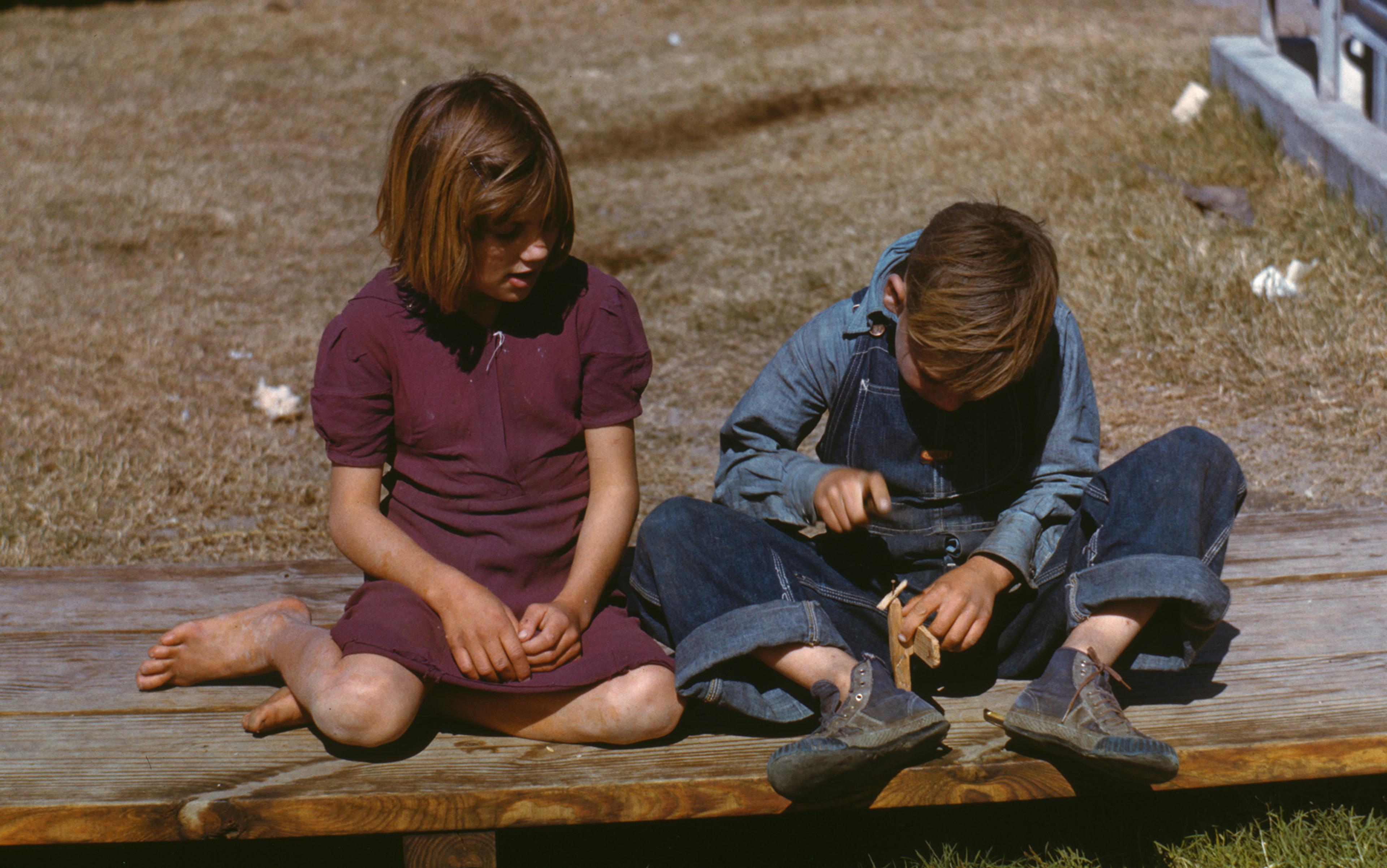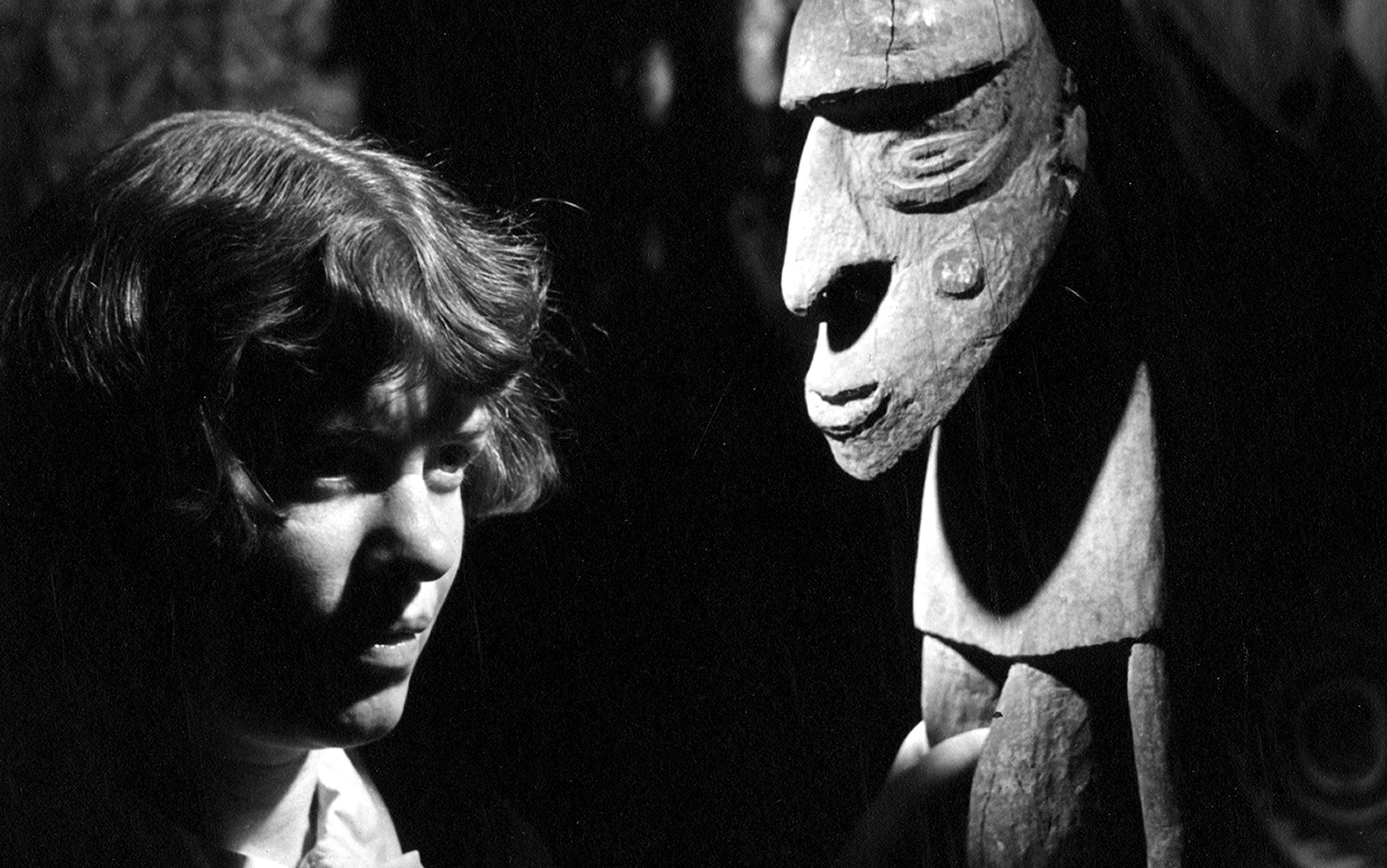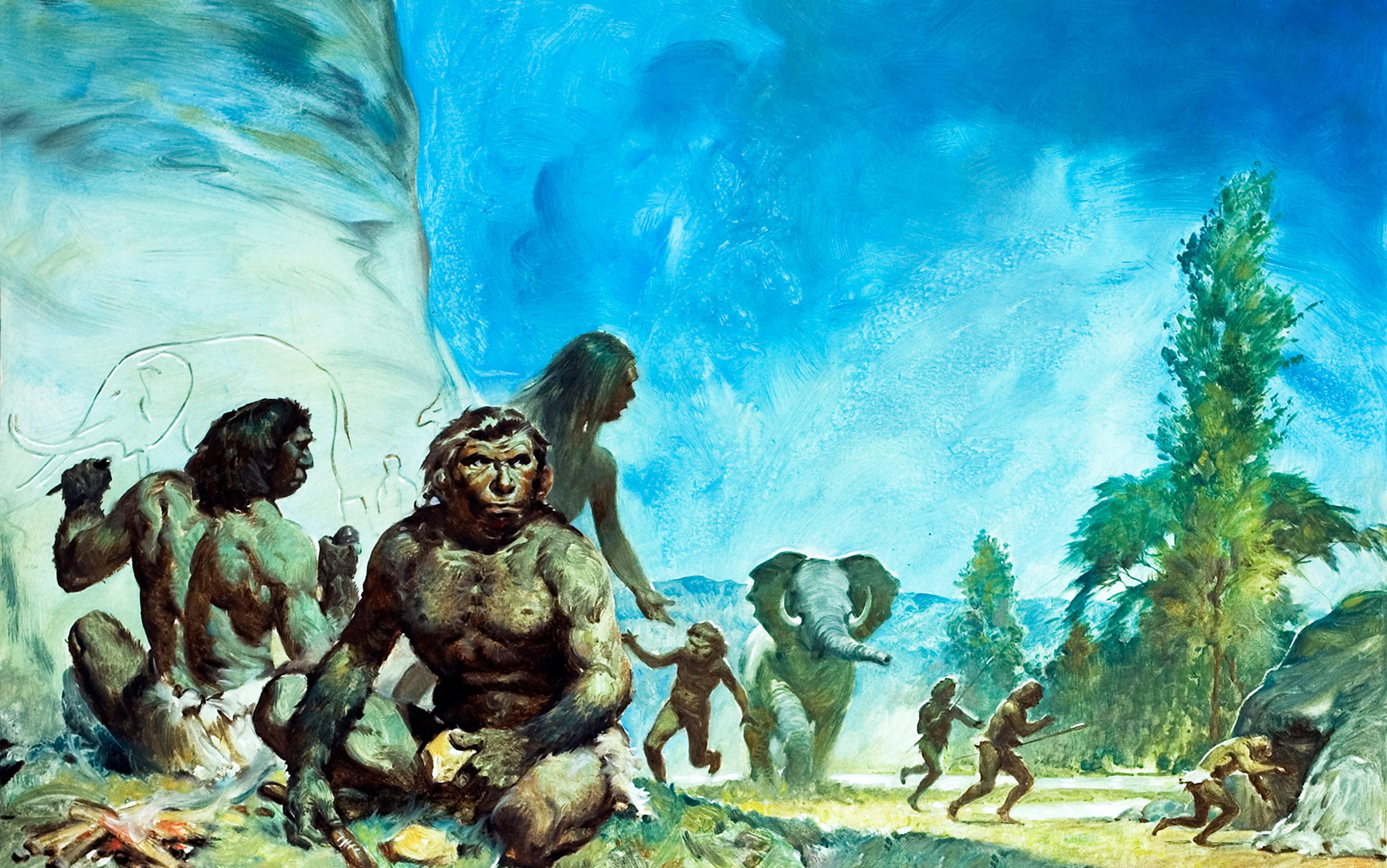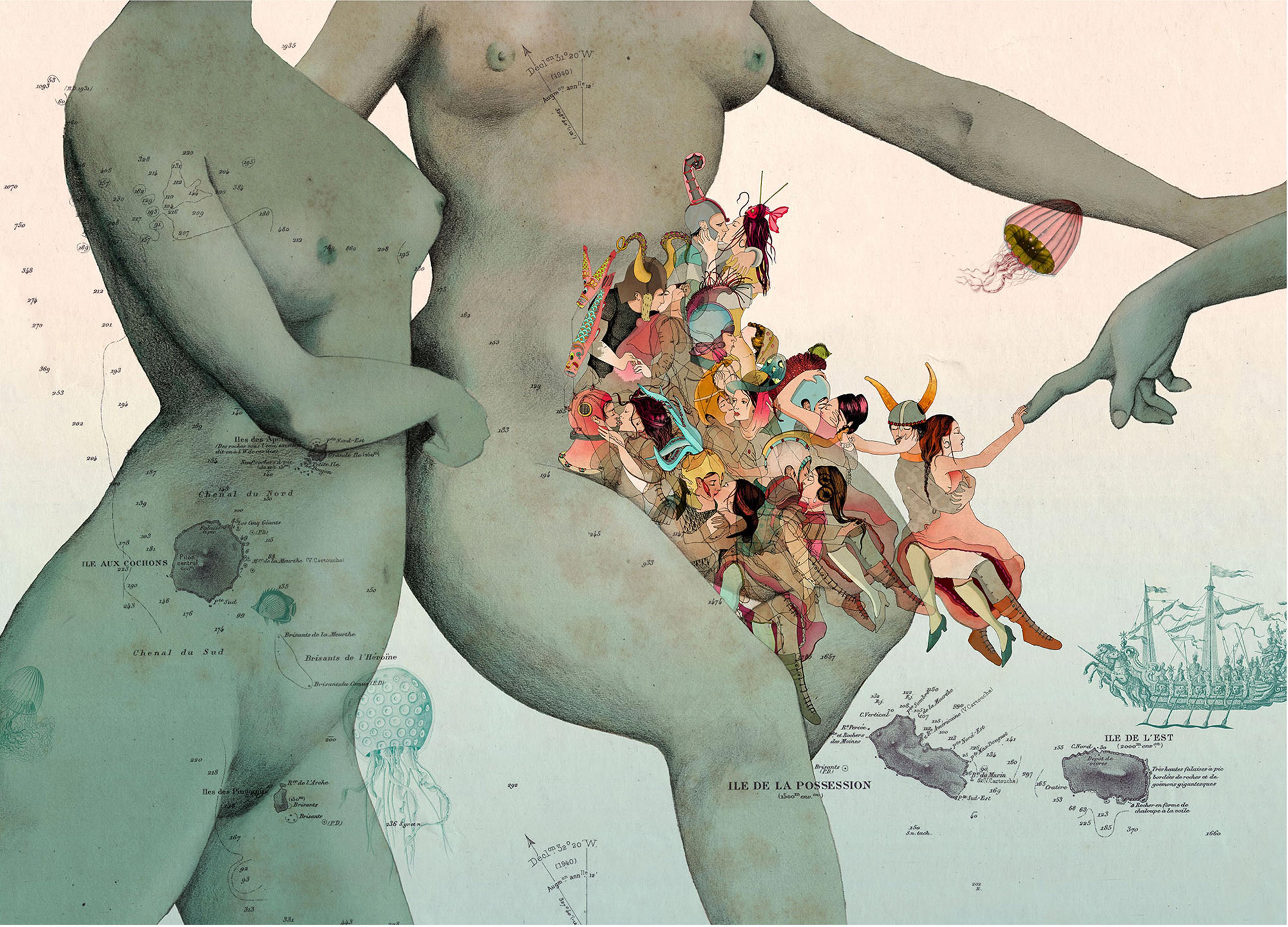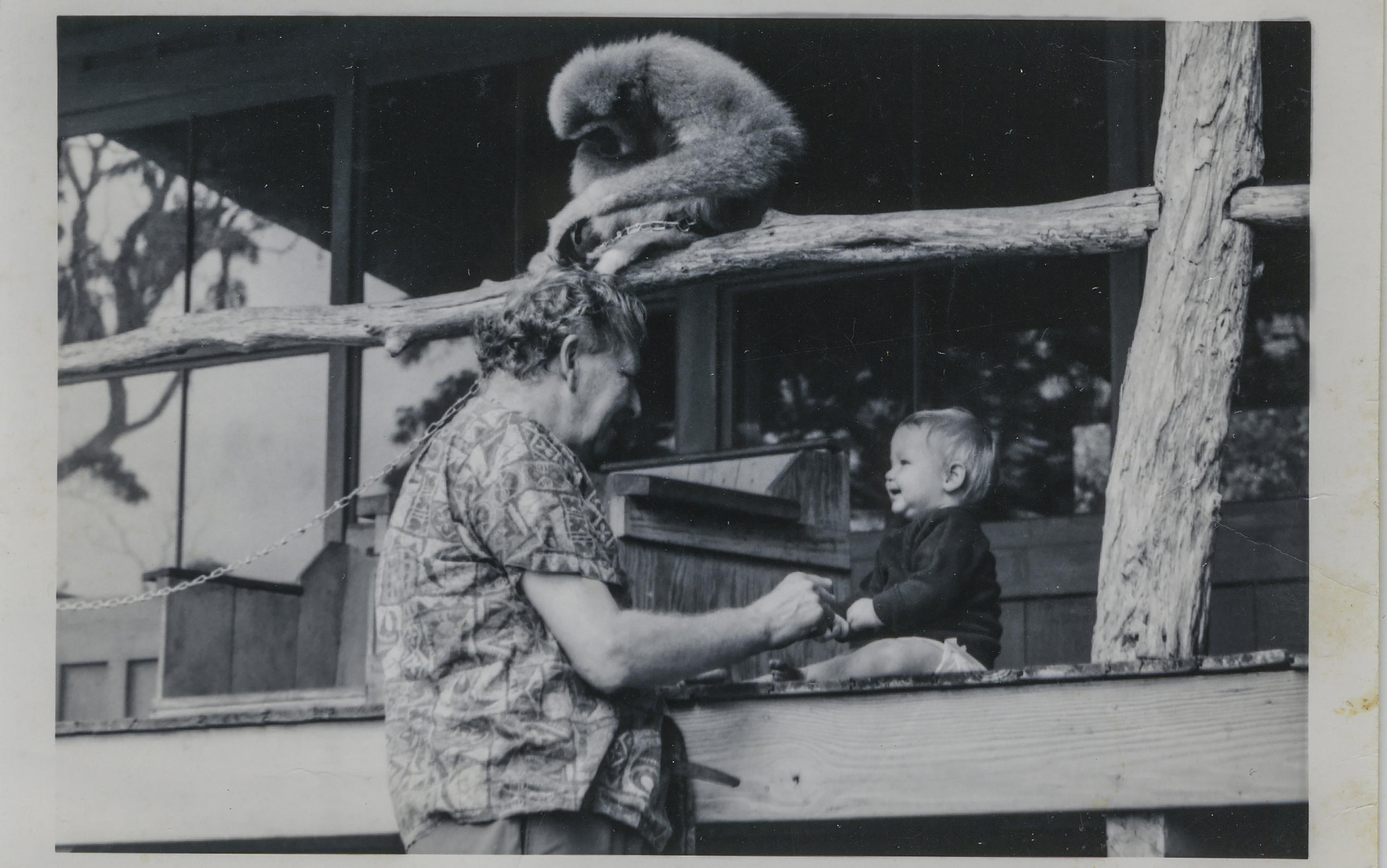Viola Klein was vexed. She did not know the world-famous anthropologist Margaret Mead personally, but she had glimpsed Mead’s mind in her groundbreaking early books, especially the radical study Sex and Temperament in Three Primitive Societies (1935). Klein also studied gender roles, although her own first book, The Feminine Character (1946), had not made nearly as big a splash as Mead’s. Klein believed that the two scholars were on the same side of the fight to liberate women from outmoded, biologically based restrictions. And then, in 1949, it seemed that Mead’s mind changed. Klein’s ally had become an enemy, and she wanted to know why.
Klein raised her concerns in a special volume of the Journal of Social Issues in 1950 on the ‘Problems of Professional Women’. (Those problems included lower pay, reduced chance of promotion, disrespect, and lack of affordable childcare, all of which will sound familiar to professional women 60 years later.) In Sex and Temperament, Mead had, in Klein’s estimation, ‘done more than anybody else to underline the relativity of the terms “masculine” and “feminine”,’ demonstrating ‘the great malleability of human nature’. Only cultural conventions limited women’s horizons, that book decreed. But in the book Male and Female: A Study of the Sexes in a Changing World (1949), Mead had ‘come out in favour of a theory which explains feminine psychology in terms of women’s biological function’. Women’s lives, Mead suddenly claimed, were indelibly shaped by the fact that their bodies could make babies. ‘It is in direct contradiction to the views expressed by the same author in many places even in the same book,’ wrote Klein. What could explain such a devastating reversal?
There are at least three possible explanations for Mead’s apparent shift. One, she had changed, from a Bohemian rebel into a middle-aged frump. Two, the world had changed from one side of a global war to the other. Three, Mead had come under the spell of Freudianism, like so many midcentury thinkers. An exchange of letters between Klein and Mead, unearthed from Mead’s vast archive in the US Library of Congress, reveals a fourth and more perplexing possibility. Maybe no one had understood what Mead was trying to say about gender at all.
Margaret Mead (1901-78) earned her reputation as a rebel. In the 1920s, she trained with Franz Boas at Columbia University in New York, in the nascent field of anthropology. Papa Franz hesitated to allow his female students to travel anywhere too exotic for their fieldwork, but Mead insisted on venturing to the South Pacific, seeking to observe a culture sharply different from her own. She ended up in Samoa, posing as an unmarried maiden and asking adolescent girls about their sex lives. She wanted to find out whether the teen years were universally difficult, owing to the physiological changes of puberty, or whether American youths were particularly fractious because they chafed against leftover Victorian mores. Her bestselling book Coming of Age in Samoa (1928) blamed prudishness rather than puberty. The book suggested that, if everyone lived as freely as the half-clad couple on the cover dashing toward a moonlit stand of palm trees, most neuroses would disappear.
In contrast with the armchair anthropologists of a previous generation, Mead wrote to open a window directly on to the sights, sounds and tastes of other societies. She also wrote with an eye toward a popular readership. She didn’t just want to describe Samoan culture, she wanted to explain what Americans could learn from it. Less overtly, she wrote to work out tensions in her own life. Unbeknown to her Samoan hosts, she was already married to her high-school sweetheart but uneasily so. Additionally, she was in love with Ruth Benedict, one of her graduate school mentors, and she had just broken off an affair with Edward Sapir, a colleague. On the return voyage from Samoa, she began a relationship with yet another anthropologist, Reo Fortune. Was it possible to live as freely as the Samoans? The prospect was certainly appealing.
By 1931, Mead was back in the South Pacific, now married to Fortune, once again uneasily. While sailing up and down the Sepik River in New Guinea, looking for cultures to compare, the couple ran into Gregory Bateson, a younger, English anthropologist. They were soon embroiled in a love triangle that would help shape the discipline of anthropology. Fortune was a man’s man, jealous and sometimes violent. Bateson was kinder, more responsive, more like Mead’s perception of herself. While Mead was studying the way men and women related to each other in New Guinea, she was trying to figure out what kind of woman she wanted to be, paired with what kind of man. (A woman partner was, at this point in her life, out of the question.)
A society that required women to compete with men but penalised women for achievement was unsustainable
In 1933, she returned to New York, where at a furious pace of thousands of words per hour, she wrote Sex and Temperament in Three Primitive Societies. The book’s argument was straightforward. Among the indigenous groups whom she called Arapesh, Mundugumor and Tchambuli, Mead noticed that expectations for men and women varied significantly. Although the book contained much more detail and nuance, in simplified terms all of the Arapesh were feminine by Western standards, all of the Mundugumor were masculine, and the Tchambuli reversed Western norms, with dominant, managerial women and emotionally dependent men. Mead asserted that, by comparing sex roles across these societies, ‘it is possible to gain a greater insight into what elements are social constructs, originally irrelevant to the biological facts of sex-gender.’ She concluded that ‘human nature is almost unbelievably malleable, responding accurately and contrastingly to contrasting cultural conditions.’ In short, nurture rather than nature produced gender. The book said nothing about her personal life, but members of the social science community noticed Fortune’s hasty return to New Guinea and Mead’s marriage to Bateson in 1936.
Coming of Age and Sex and Temperament established Mead as a maverick, one whom Klein thought that she understood. By the late 1940s, however, Mead was the mother of a young daughter, Mary Catherine Bateson (called Cathy), and headed toward her third divorce. It had been a decade since she’d conducted field research when Male and Female (1949) was published, a book centred on the travails of middle-class America. In it, she asked:
Have we over-domesticated men, denied their natural adventurousness, tied them down to machines that are after all only glorified spindles and looms, mortars and pestles and digging sticks, all of which were once women’s work? Have we cut women off from their natural closeness to their children, taught them to look for a job instead of the touch of a child’s hand, for status in a competitive world rather than a unique place by a glowing hearth?
These were the concerns of an older woman whose standing as an intellectual made her feel responsible to address the problems of modern family life.
Every American, in Male and Female, was unhappy: girls and boys bewildered by conflicting instructions to ‘be good’; adolescents flustered by courtship rituals; women and men resenting each other in the workplace; mothers and fathers at their wits’ end in isolated, suburban homes. A society that required women to compete with men but penalised women for achievement was unsustainable. A better world, Mead counselled, would foster ‘two kinds of freedom, freedom to use untapped gifts of each sex, and freedom to admit freely and cultivate in each sex their special superiorities.’ If, as Mead suspected, women were better at childrearing and intuition while men excelled at invention and analysis, the price for attempting to overrule biology was simply too high.
Mead herself didn’t fit the gender type that she described in Male and Female, but perhaps she felt that she would have been happier if she did. Even though she didn’t return to South Pacific fieldwork while her daughter was young, she travelled frequently, often leaving Cathy in the care of her lifelong friend Marie Eichelberger. Mead’s career significantly overshadowed those of Fortune and Bateson, causing friction in both marriages. She could, at times, be intuitive as a mother. Her responsive approach to infant care, based on patterns she observed in her fieldwork, became the model for her paediatrician’s bestselling guide, The Common Sense Book of Baby and Child Care (1946). Mead had chosen a then-unknown Dr Benjamin Spock as Cathy’s paediatrician because he would allow Mead to have a natural childbirth, keep the baby in her own room at the hospital, and feed on demand, all departures from the era’s ‘scientific’ protocols. Mead could also be oblivious. She once told another mother that her daughter never faced bullying at school, causing Cathy, who was miserable at school, to burst into tears. In effect, Mead was dishing out a lot of advice in Male and Female that she had never bothered to take, and Klein – who never married, nor became a mother – was left dismayed.
Mead did not address her personal life in Male and Female, but she did acknowledge that the world had changed between 1935 and 1949. The most significant change, in her mind, was the advent of nuclear weapons. The human capability to end life on the planet made anthropological enquiries about harmonious interpersonal relations and the rearing of future generations vitally urgent. In the book’s first chapter she asked:
Are such questions about the rôles and the possible rôles of the sexes academic, peripheral to the central problems of our times? Are such discussions querulous fiddling while Rome burns? I think they are not. Upon the growing accuracy with which we are able to judge our limitations and our potentialities, as human beings and in particular as human societies, will depend the survival of our civilisation.
It was imperative to, in what became her signature phrase, ‘cherish the life of the world’.
The Cold War shaped everyone’s concerns. In 1950, Mead noted in her contribution to the Journal of Social Issues that the Soviet Union had embarked on a radical experiment in gender parity and had ‘freed’ (Mead placed that word in scare quotes) women to work in factories by having ‘freed’ them from the burdens of childcare. She also pointed out that Soviet women remained ‘saddled with problems of homemaking’ after their factory shifts. She was suspicious of nations experimenting on citizens through social engineering. She wrote:
A totalitarian society which places the assumed welfare of the state above the welfare of the individual determines what an individual may and may not, must and must not do. A democracy ideally seeks to create conditions within which individuals will be able to make choices which integrate their own intentions and the welfare of the community as a whole.
Mead clearly preferred the latter approach. What if (taking the Soviets’ five-year plans for example) the state’s assumptions about welfare proved disastrously wrong? Mead pleaded: ‘We know far too little to risk losing the most precious privilege of a democratic society, free experimentation.’
The sexual possibilities of the South Pacific felt very remote from the confines of parenthood
And then there was the Baby Boom. The US birth rate in 1935 was 17 live births per 1,000 people, adding more than 2.1 million babies to the population. By 1949, the rate had risen to 24 births per 1,000 people, adding more than 3.5 million babies. That high rate held for about a decade, deviating from the long, sharply downward trend stretching from the 1820s (54 births per 1,000) to the 2010s (around 12 births per 1,000). The Baby Boom meant that Mead’s focus in Male and Female on men and women as fathers and mothers, rather than as individuals at liberty to explore ‘the great malleability of human nature’, resonated with many Americans’ contemporary experience. The sexual possibilities of the South Pacific felt very remote from the confines of parenthood.
Klein, however, thought that Mead had strayed from solid, social-scientific ground into some psychoanalytic morass. As an example, Klein cited a passage from Male and Female that read:
So the life of the female starts and ends with sureness, first with the simple identification with her mother, last with the sureness that that identification is true, and that she has made another human being. The period of doubt, of envy of her brother, is brief, and comes early, followed by the long years of sureness.
Mead presented this scenario as both a specific feature of New Guinea societies and an experience as universal as the Oedipus complex. Klein argued:
Thus, as a social anthropologist Margaret Mead stresses the variety of culture patterns and the purely conventional coincidence of psychological traits with sex; under the influence of psychoanalytic theory she links the two.
Klein rejected both Mead’s mixing of disciplines and her alignment with Sigmund Freud, a theorist who was widely considered misogynist.
More than a decade later, Betty Friedan, who had found Mead’s life and early work inspiring, felt similarly betrayed by Male and Female. Friedan addressed Mead directly in The Feminine Mystique (1963), writing:
For when sexual differences become the basis of your approach to culture and personality, and when you assume that sexuality is the driving force of human personality (an assumption that you took from Freud), and when, moreover, as an anthropologist, you know that there are no true-for-every-culture sexual differences except those involved in the act of procreation, you will inevitably give that one biological difference, the difference in reproductive role, increasing importance in the determination of woman’s personality.
Mead, Friedan thought, had taken a disastrous turn to essentialism, and Male and Female became ‘the cornerstone of the feminine mystique’.
Mead never responded to Friedan, but she did try to explain herself to Klein. Their 1950 letters suggest a different way to understand the apparent contradictions between Mead’s 1935 and 1949 books. Klein insisted to Mead that, between Sex and Temperament and Male and Female, ‘something has happened that has produced in you a change of heart, if not of mind, and that you now maintain two contradictory points of view.’ In her early work, as Klein read it, Mead asserted that ‘masculine’ and ‘feminine’ were relative terms, based on ‘purely cultural conditioning’. In the 1949 book, Mead instead posited ‘fundamental, biologically conditioned differences in the mental make-up of the sexes which are universal, ie independent of cultural conditions.’
Klein couldn’t understand how one person could hold both of these diametrically opposed ideas. She guessed that Mead was unconsciously replicating a kind of schizophrenia arising from scientific specialisation. As the modern academy couldn’t decide between truth claims put forth by different disciplines, neither could Mead. Klein hoped that Mead wouldn’t mind being ‘treated as “symptomatic”’ of this larger phenomenon, and would recognise Klein as a fellow labourer in the project of stretching ideas of gender to accommodate a wider variety of individuals.
In a long and thoughtful reply to Klein, Mead explained she saw no contradiction between her books. On one level, the apparent disagreement between the two books, and between Mead and Klein, rested on the adverbs ‘almost’ and ‘purely’. Mead had written that ‘human nature is almost unbelievably malleable’. Klein had interpreted that sentence, and others in Sex and Temperament, to conclude that Mead attributed gender to ‘purely cultural conditioning’. Mead stood firm, writing: ‘In your phrasing I am made to say that masculine and feminine typing is relative and based on purely [emphasis in original] cultural conditioning, but I didn’t say that, and I never believed it.’
Mead outlined a model of gender that was not linear and binary but multidimensional
Instead, Mead held that all human beings were born with both sex and temperament. In a published response to a review of Sex and Temperament, a copy of which she sent to Klein, Mead defined temperament as ‘those aspects of the personality which are physiologically “given”.’ She distinguished it from character, which she defined as ‘that part of individual personality which is the result of the interaction between native equipment – or temperament – and cultural conditioning.’ Decoupling observed traits from the biological facts of sex did not, according to Mead, decouple them from biology. If males were more often born with temperaments that cultures recognised as masculine, and females were born with temperaments that cultures recognised as feminine, then gendered patterns were not purely cultural. Mead lacked evidence to settle that question in 1935, and in 1950 she was still mulling over what she had written earlier: ‘Whether or not these temperamental traits are equally distributed among both sexes remains for further investigation,’ she wrote.
In her letter, Mead outlined a model of gender that was not linear and binary but multidimensional. She laid out much of her vision in one long sentence, here in full:
Each human culture – of which we have any knowledge – takes clues from temperament, sometimes from only one for each sex, sometimes in highly patterned ways, by sex, caste, occupation, etc, and by education produces in members of other temperaments an appearance of the desired temperament, but the dynamics within the personality will be very different, as to whether little As are being made into Bs or little Bs are being made into As. So also if one is born a female A, in a culture which thinks only males should be A, there are severe penalties which differ from being born a female B in a culture that doesn’t recognise any Bs at all. Using As and Bs like that is of course terrific oversimplification of the point, but I do believe that the same temperaments occur in every human population, and can be identified.
If the phrase ‘almost unbelievably malleable’ represents human nature as clay, in Mead’s later formulation it was more like a bonsai tree, still able to be shaped but not just any which way. Mead knew the pain of having qualities of temperament associated strongly with the opposite sex. But she did not believe that her desire to be a wife and a mother arose only from cultural conditioning, nor did she find it uncongenial to appear or act feminine. That was who she was, how she wanted to present herself. She just wanted to have a vibrant career and room for sexual exploration, too.
Mead allowed that she had shifted emphasis between 1935’s Sex and Temperament and 1949’s Male and Female. But, she explained to Klein, there was a logic: ‘one couldn’t talk about real sex differences without talking first about acquired ones.’ She had also decided that ‘temperament was not a very good place to put major emphasis [in the 1930s], given the state of the world.’ Mead referred to the menace of eugenics, a programme pursued by the Nazis but powerful in the United States too. Like all of the Boasians at Columbia, Mead considered it her responsibility to combat the idea that any human being was genetically unfit to survive. On that score, she and Klein were in total agreement. Klein’s Jewish family had fled Vienna for Prague to escape political pressure, and then she and her brother relocated to England shortly before the German invasion in 1939. Her parents died in concentration camps. All of Klein’s work was informed by her awareness that attributing supposedly innate characteristics to groups of people, by race or gender, could lead to abuse, even to mass murder.
Additionally, Mead told Klein that her 1936-39 field research in Bali and Iatmul, New Guinea, taught her ‘more about the role of the body and the role of inward bodily oriented thinking’. Here the ethnographic use of film and photography, methods that Mead and Bateson pioneered, proved important. For example, Mead believed that the film Bathing Babies in Three Cultures, a compilation of footage from the 1930s fieldwork, showed formative interactions between mothers and children. ‘There is really no difference in my premises throughout this entire period,’ she insisted to Klein, only that she was now elaborating on different aspects of sex and gender.
In Mead’s mind, she had never elevated nature or nurture to the exclusion of the other factor in her analysis, but rather investigated their ‘cross-cut’ interaction. Adding and blending without subtraction came naturally to her. She maintained correspondence with past lovers, spouses, in-laws, students and colleagues, constantly adding names to her circle of acquaintance while rarely deleting any. ‘I can’t bear people who drop other people,’ she once said. She never held a single, full-time job but split her time between teaching at Columbia University, serving as a curator at the American Museum of Natural History, writing and lecturing. Her sprawling collected papers constitute one of the largest single archives in the Library of Congress.
Perhaps the best answer to any question about her, then, is: ‘All of the above.’ She admitted to Klein that her graduate students ‘were completely enraged after I had given a semester on cultural conditioning, when I gave a final lecture on temperament. [They] said with great bitterness that I couldn’t have it both ways.’ She did want to have it both ways – sex and temperament, male and female, nature and nurture. Why choose, when life always offered so many different experiences and mysteries?
